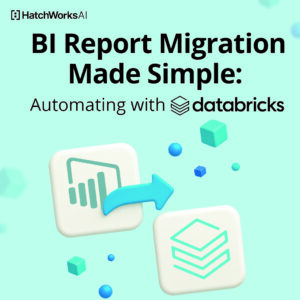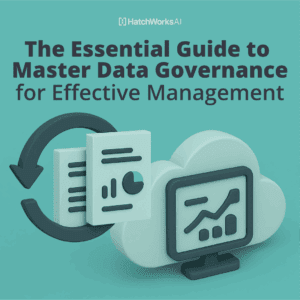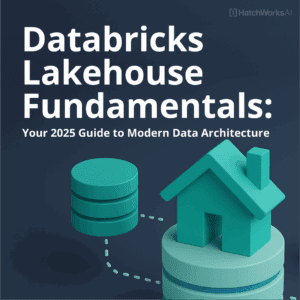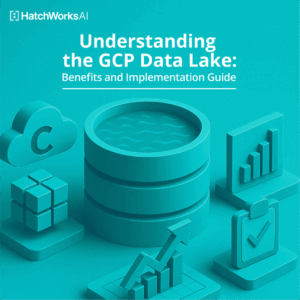Data governance practices give your business the control, consistency, and accountability over your data. Data management makes sure your systems can actually act on it.
Together, they form the foundation for more robust analytics, better AI, faster decisions, and fewer mistakes.
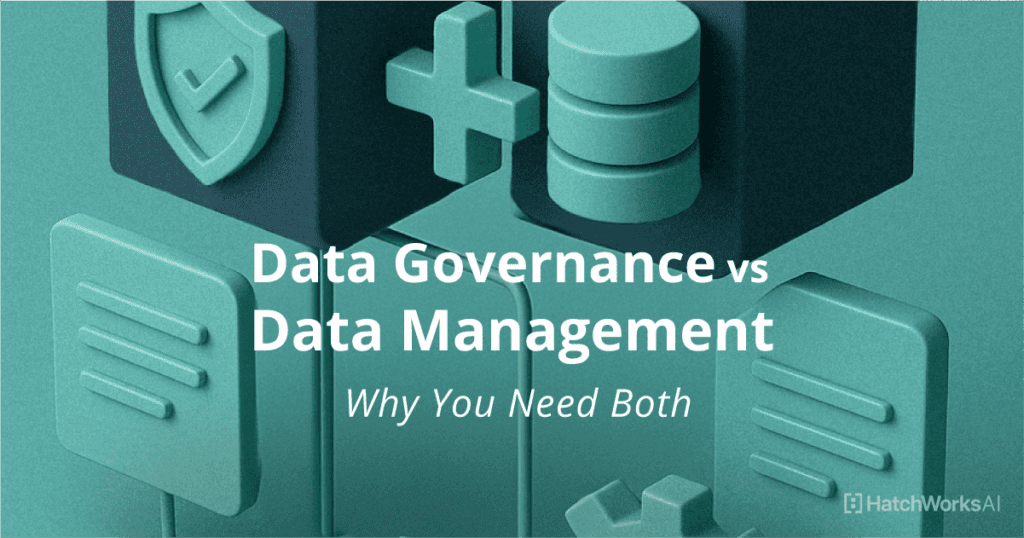
In this guide, we’ll break down the difference between the two, how they work together, and why getting both right is the key to unlocking long-term data value.
The Difference Between Data Governance and Data Management Explained
They sound familiar. And they definitely overlap. But data governance and data management solve different problems.
Data management focuses on how data moves. It’s the plumbing behind the scenes: collecting, organizing, securing, and storing information so your systems can run.
Data governance focuses on the strategic and policy aspects of data management, including data quality, data security, and data access. It’s about the why and who.
One is operational while the other is strategic.
| Data Management | Data Governance | |
|---|---|---|
|
Focus
|
Operational handling of data—storage, movement, processing
|
Strategic control over ownership, quality, access, compliance
|
|
Primary Purpose
|
Make data usable for analytics and decision-making
|
Make data trustworthy and compliant across the organization
|
|
Key Activities
|
Integration, storage, optimization, cleansing
|
Policy creation, stewardship, access control, data quality monitoring
|
|
Who’s Involved
|
Data engineers, IT teams
|
Data stewards, compliance officers, business leaders
|
|
Why It Matters
|
Enables reliable, scalable data workflows
|
Prevents misuse, ensures consistency, supports AI-readiness
|
Data Governance and Data Management: A Match Made in Heaven
Data management helps you move fast, and data governance keeps you from going off the rails. One without the other, and you’ll struggle to turn raw data into meaningful business insights.
Here are three ways they work together:
1) Governance defines the rules → Management enforces them
Defining what good data looks like is a start. But it takes day-to-day processes (like validation, integration, and access control) to make those standards real.
2) Governance aligns data with business intent → Management makes it operational
You don’t want data that’s just accurate, you want data that’s relevant. Governance brings business context into play while management ensures it’s available when and where it’s needed.
3) Governance guards the truth → Management moves the data
When these two are in sync, teams trust the data in front of them and can actually use it to make decisions, train AI models, and move the business forward.
The bottom line: both are essential components of your organizational data strategy.
And that only works when governance and management teams collaborate by sharing language, aligning goals, and maintaining an open line between IT, data stewards, and business leadership.
The Benefits of Strong Data Governance and Effective Data Management
When data governance and data management work hand in hand, the impact goes far beyond clean spreadsheets. Here’s what you can expect to happen in your business from implementing this duo together:
- Improved data quality: Reduces duplicate records, missing values, and inconsistent formats so analytics and AI models are built on reliable foundations.
- Faster root cause analysis: Clear data lineage and metadata make it easy to trace issues back to their source without time-consuming guesswork.
- More confident decision-making: Business teams can trust the data in front of them, leading to faster, better-informed decisions across the board.
- Easier regulatory compliance: Governance frameworks simplify alignment with GDPR, HIPAA, and CCPA, while management systems apply those rules at scale.
- Reduced risk of data breaches: Role-based access, encryption, and automated retention policies help protect sensitive data from exposure.
- Shorter development cycles: Clean, well-structured data reduces friction for engineers and analysts, speeding up delivery of features and insights.
- Stronger AI and ML performance: High-quality, consistent data leads to better training inputs, improving the accuracy and reliability of AI outcomes.
How to Do Both Well
Data management and governance require structure, leadership, and a shared commitment to improving data quality and maximizing data usage. Here’s how to approach each.
Best Practices for Data Governance
A solid governance strategy starts with structure. That means establishing a clear governance framework that has executive support from the beginning. Without buy-in from leadership, policies tend to stay theoretical and rarely gain traction across the organization.
Once the framework is in place, data quality and security should take top priority. This includes defining what “good” data looks like—complete, accurate, timely—and putting clear rules in place for how sensitive data should be accessed and protected. Governance is also an ongoing process, not a one-time setup. Regular audits help ensure that your policies hold up under evolving regulatory standards, such as GDPR, HIPAA, or CCPA.
Equally important is assigning responsibility. Data stewards play a critical role in ensuring that governance policies are actually followed. They bridge the gap between strategy and execution, acting as custodians of data quality and accountability across teams.
Want more insights into data governance? Check out these HatchWorks AI resources:
- The Core Components of Data Governance—Are Yours in Order?
- Understanding Data Governance Responsibilities: A Comprehensive 2025 Guide
- Data Governance Goals: Are You Missing These Critical Objectives?
- Best Practices for Data Governance: Ensure Compliance and Quality
- Data Strategy vs. Data Governance in 2025: What’s Relevant for Your Business Today
Best Practices for Data Management
To make data management work in a real-world environment, your systems need to be scalable, connected, and built to adapt. It starts with investing in storage infrastructure that can keep up with data growth, whether that’s through cloud-native platforms, hybrid environments, or modern lakehouse architectures.
Data integration is another essential focus. When teams rely on siloed systems, it becomes impossible to generate a single, trusted view of the business. Integrated pipelines solve that, allowing data to flow freely across departments and into the hands of those who need it most.
Reliable data management also means being prepared with automated backups and recovery plans.
And with growing complexity, observability becomes key. Monitoring tools that track performance, data health, and pipeline issues help technical teams stay ahead of problems, rather than react to them after the fact.
How to Align Data Governance with Data Management
Strong governance? Great. Effective data management? Also great.
But if the two aren’t working together, cracks start to show.
That’s why alignment is just as important as execution. And it starts with getting the right people talking. Data stewards, compliance leads, engineers, and architects all need shared goals and not separate roadmaps.
Technology helps, too. Integrated platforms that support both governance and management, like Databricks, make it easier to track lineage, control access, monitor quality, and manage data in one place. That reduces silos and makes your governance policies enforceable where they matter most.
Finally, alignment isn’t a one-time setup. Your data strategy should evolve alongside your business. Regular reviews help keep your governance and management efforts focused, responsive, and ready for what’s next.
When the two are in sync, your data becomes cleaner, more compliant, and a whole lot more useful, especially when it’s time to bring AI into the picture.
Tools and Technologies for Data Governance and Management
When it comes time to invest in data governance and data management tools, look for platforms that do three things well: enforce policy, improve visibility, and scale with your data.
Some of the most common tool categories include:
- Data governance platforms: Support policy creation, access control, compliance tracking, and stewardship workflows. These tools are built to manage governance frameworks at scale.
- Data integration tools: Enable the movement of data across systems—breaking down silos and helping teams work from a unified data source.
- Data storage and processing solutions: Provide scalable infrastructure for housing structured and unstructured data, often with built-in performance optimization.
- Data catalogs: Offer a searchable inventory of data assets, complete with metadata, ownership details, and usage history—useful for both governance and day-to-day management.
- Data classification tools: Help automatically tag sensitive or regulated data, making it easier to apply appropriate governance rules and manage risk.
- Backup and recovery tools: Automate protection and recovery processes to reduce the risk of data loss and ensure business continuity.
Today’s most effective solutions, such as Databricks, combine those governance and management features in a single environment. You can learn more about how Databricks works and why we use them with our clients here.
Your AI Is Only as Good as Your Data—Here’s How Governance and Management Help
Businesses that struggle with governing and managing data often struggle using AI. Not because they picked the wrong model. But because they fed the right model the wrong inputs, or didn’t have data to input in the first place.
If you’ve done the hard work of getting your data right, AI becomes less of a gamble and more of a growth lever.
Here’s how:
LLMs and ML models are hungry for context
AI needs data that’s clearly defined, consistently structured, and rich with meaning. Without governance, models get conflicting inputs, unclear definitions, and missing values that lead to hallucinations, bias, or flat-out bad results.
Good data structure = better model performance
Well-managed data is easier to label, version, and feed into training pipelines. That means faster iterations, more accurate predictions, and fewer dead-end experiments.
Governance provides the metadata AI relies on
Governance practices like data cataloging, classification, and ownership tracking provide the context AI needs to make connections and return relevant results, especially in retrieval-augmented generation (RAG) and other enterprise AI use cases.
All that’s to say: when your data is well governed and well managed, you can use generative AI with a lot more confidence
Build a Data Foundation AI Can Trust with HatchWorks
If you’re building with AI and hitting limits, your data might be the reason. At HatchWorks, we help companies build the data foundation their AI strategy depends on.
Want to learn more? Check out our Databricks services.
Data Lakehouse Migration
Top Databricks Talent
AI Solution Development
Unified Data Governance
Democratized Analytics
Conversational AI on Databricks
Build a Databricks RAG (Retrieval Augmented Generation) solution to unify structured and unstructured data, enabling tailored AI-driven experiences.
Get Your Data AI Ready
Partner with HatchWorks AI to assess your AI Data Readiness and Governance to create a clear path to AI success.
